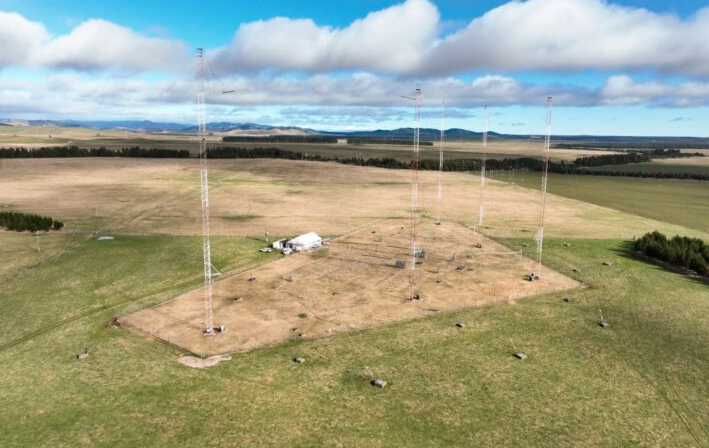Radio New Zealand (RNZ) Pacific is embracing the future of shortwave broadcasting with the launch of a cutting-edge 100 kW Ampegon TSW-2100 shortwave transmitter. At a time when many international broadcasters are phasing out their shortwave services, RNZ Pacific is doubling down on this critical communication medium to enhance its reach across the Pacific.

IMAGE: A drone view of the RNZ Pacific shortwave site at Rangitaiki, New Zealand. (Photo courtesy Radio New Zealand.)
The new transmitter, which was officially brought online on August 1, 2024, replaces the ageing “Transmitter 1” that has served the broadcaster since 1989. Located at Rangitaiki, near Taupō in New Zealand’s central North Island, this upgrade is part of a significant NZ$4.4 million (US$2.4 million) investment aimed at bolstering RNZ Pacific’s broadcasting capabilities. The transmitter is equipped to handle both analog and Digital Radio Mondiale (DRM) transmissions, ensuring high-quality, resilient communication across the Pacific region.
The inauguration of this new transmitter was marked by a ceremony attended by notable dignitaries, including New Zealand’s Foreign Affairs Minister Winston Peters and representatives from several Pacific nations such as Kiribati, the Cook Islands, Samoa, Fiji, Papua New Guinea, and the Solomon Islands. The event was observed both at RNZ House in Wellington and at the Rangitaiki transmitter site, underscoring the importance of this technological advancement.
Reflecting on the significance of shortwave broadcasting, Minister Peters highlighted its enduring relevance. “Shortwave was crucial when the New Zealand Broadcasting Service began in 1948, and it remains indispensable today,” he remarked. “In times of crisis, such as tsunamis or cyclones, shortwave is the most reliable system to ensure communication is maintained.”

RNZ Pacific’s commitment to shortwave broadcasting is particularly vital, given the limited number of countries still providing this service to the region. Following Australia’s decision to discontinue its shortwave transmissions in 2017, only New Zealand and China remain as active providers.
Paul Thompson, RNZ’s Chief Executive, emphasised the importance of shortwave during emergencies, citing the 2022 Hunga Tonga–Hunga Haʻapai eruption as a key example. The disaster severed internet connections in Tonga for several weeks, yet RNZ Pacific’s shortwave broadcasts continued uninterrupted, providing a critical lifeline of information.
Moera Tuilaepa-Taylor, RNZ Pacific’s Manager, expressed pride in the broadcaster’s longstanding tradition of sharing unique stories from the Pacific. The new transmitter, she noted, marks the beginning of a new chapter in this legacy.
The incorporation of DRM digital capabilities into the new transmitter is a significant advancement for RNZ Pacific. Ruxandra Obreja, Chair of the DRM Consortium, highlighted how local broadcasters across the Pacific can rebroadcast RNZ Pacific’s digital streams without any loss of audio quality, ensuring that content reaches even the most remote areas with clarity. Currently, 22 broadcast partners in nine Pacific island nations utilise these DRM signals.
Steve White, RNZ’s transmission engineer specialist, praised the smooth installation of the new transmitter, noting that it was completed on time and within budget, without any disruption to RNZ Pacific’s services.
Credit: This article is based on a piece originally published by T. Carter Ross in Radio World magazine.



Leave a Reply
Want to join the discussion?Feel free to contribute!